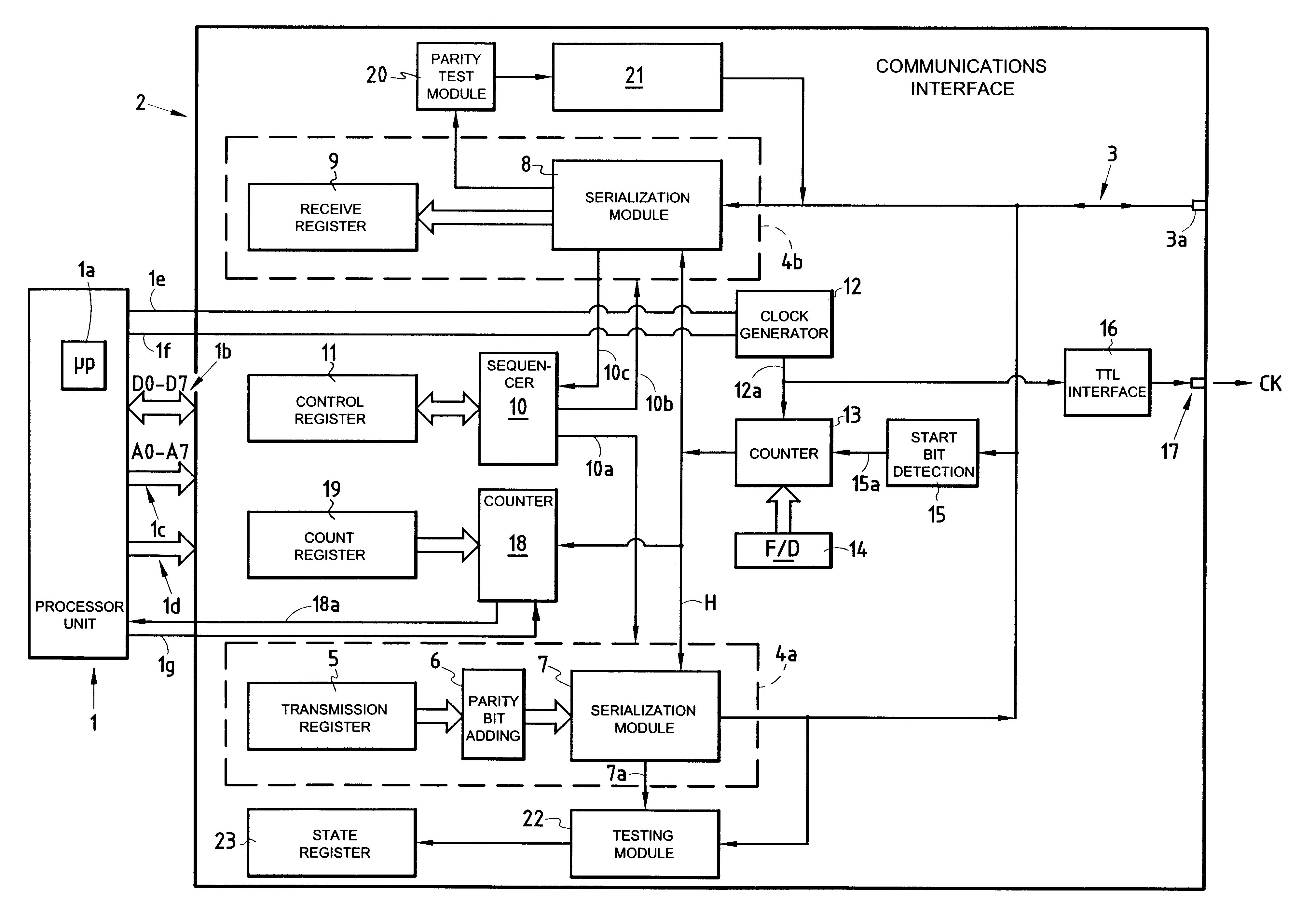Interface for communication with an IC card, and apparatus fitted with such an interface
- Summary
- Abstract
- Description
- Claims
- Application Information
AI Technical Summary
Benefits of technology
Problems solved by technology
Method used
Image
Examples
Embodiment Construction
The device shown in FIG. 1 essentially comprises an electronics card 1 based on a microprocessor 1a of conventional architecture, and a communications interface 2 of the invention for enabling the microprocessor 1a to interchange transmit and receive data with an IC card (not shown). More generally, the microprocessor 1a may be constituted by any processor unit designed for transmit and / or receive dialog with an IC card. To interchange data, the interface 2 includes in conventional manner a both-way serial communications line 3 connected to an outlet 3a of the interface 2. In operation, i.e. when the IC card is connected to the interface 2, the outlet 2a is connected to the I / O pin of the IC card dedicated to transmitting or receiving data in serial mode.
In the description below, it is assumed that the data interchanged over the serial communications line 3 is serialized in compliance with the format of international standard ISO 7816-3: one start bit (always 0), eight data bits D0 ...
PUM
 Login to View More
Login to View More Abstract
Description
Claims
Application Information
 Login to View More
Login to View More - R&D
- Intellectual Property
- Life Sciences
- Materials
- Tech Scout
- Unparalleled Data Quality
- Higher Quality Content
- 60% Fewer Hallucinations
Browse by: Latest US Patents, China's latest patents, Technical Efficacy Thesaurus, Application Domain, Technology Topic, Popular Technical Reports.
© 2025 PatSnap. All rights reserved.Legal|Privacy policy|Modern Slavery Act Transparency Statement|Sitemap|About US| Contact US: help@patsnap.com


